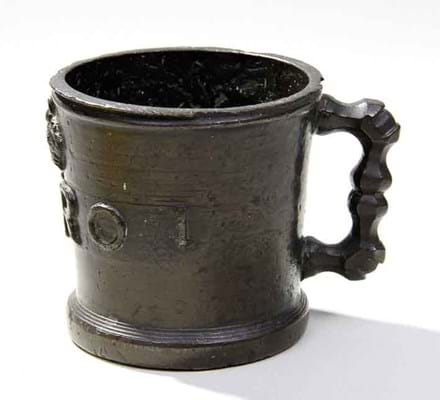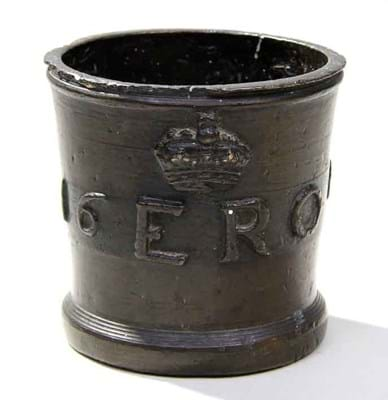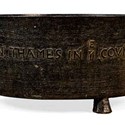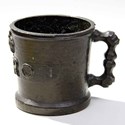A clause in Magna Carta, put before King John at Runnymede in 1215, was among the first attempts to standardise weights and measures across the British Isles. There have been many since, the current primary legislation being the Weights and Measures Act of 1985.
One way to avoid a fraudulent measure was to have a 'standard' with an exact capacity that could be verified and stamped. Standard measures were made in a heavy, durable material such as bronze and kept safe by the local council. When a dispute over measurement of wine or beer arose, a standard measure was used to establish the true capacity of a particular vessel.
Rapid economic growth, and the emergence of a robust tax-collecting machine, necessitated several issues of standard weights and measures during the Tudor period alone.
Based upon the so-called Winchester standard used in medieval times (when Winchester was the seat of government), in 1495 the London Exchequer of Henry VII (1485-1509) created new standards for measuring weight, length and capacity, with the standard bushel set at 2224 cubic inches. The copies cast and sent for use in 43 English shire towns are among the earliest English measures extant - and the models against which all locally-made coopered willow measures were checked.
Elizabeth I (1558-1603) issued a further set of standard measures from bushel to half pint in 1601 (when the bushel was set at 2124 cubic inches). This issue, sent to 57 shire towns across England, proved so successful that these venerable measures remained the primary standards until the Imperial system was introduced in 1824.
Official measures from this period make infrequent visits to the market - but two exceptional examples have appeared at auction in as many weeks.
The first sale at new premises for Ipswich auctioneers Lockdales included not just the two pieces of 17th century Usolsk enamel that took the top price of the day, but a bronze half pint measure applied with the raised lettering 16 ER 01.
Logic has it that only around 60 of these were ever made, and many fewer survived in public or private hands long after 1824, so this example created plenty of interest at its £600-900 estimate. The hammer price on March 1 was £5400 (plus 15% buyer's premium).
Bushel Measure
The 17th century measure seen at the Christie's South Kensington Masters & Makers sale on March 6 belonged in a different sub category - those produced for separate ecclesiastical or manorial jurisdictions. Town charters, for example, often also gave the mayor and bailiffs control of the weights and measures used as standards for goods sold in the market.
A full 19in (48cm) bushel measure with twin handles and three peg feet, it was applied with bronze lettering reading Sr Bolstead Whitlocke of Henly Vpon Thames in Ye Covnty of Oxon1671. It came for sale from the personal collection of a furniture dealer.
A charming inscription with plenty of research potential, a clear set of verification stamps and a much-admired patination (the catalogue photograph did it little justice) added to its appeal.
Providing further proof that old-fashioned collecting taste still has capacity to generate substantial levels of competition for the right object, five phone bidders and three strong bids left on commission saw the estimate of £1500-2000 outstripped before it took £7500 (plus 25% buyer's premium).










